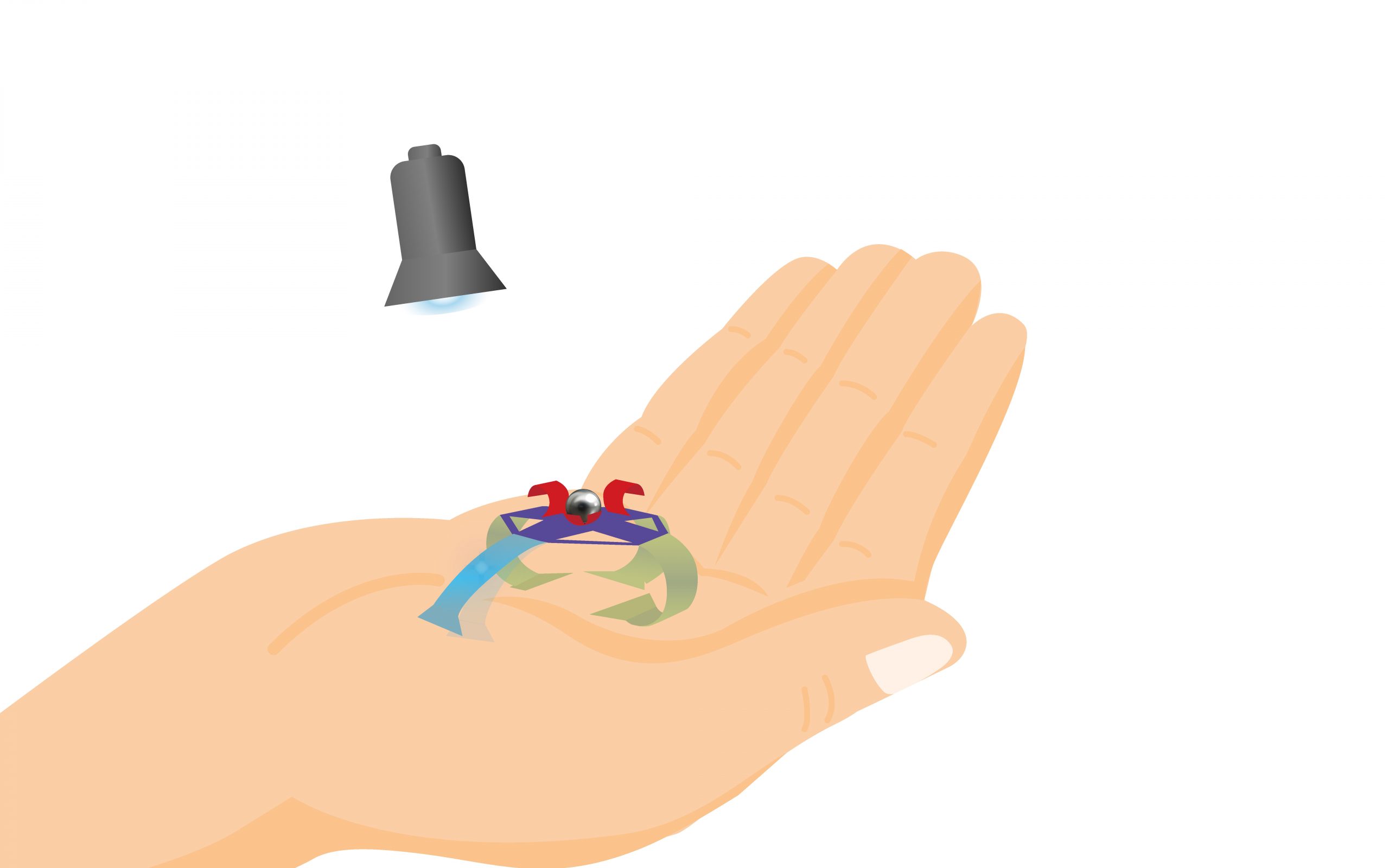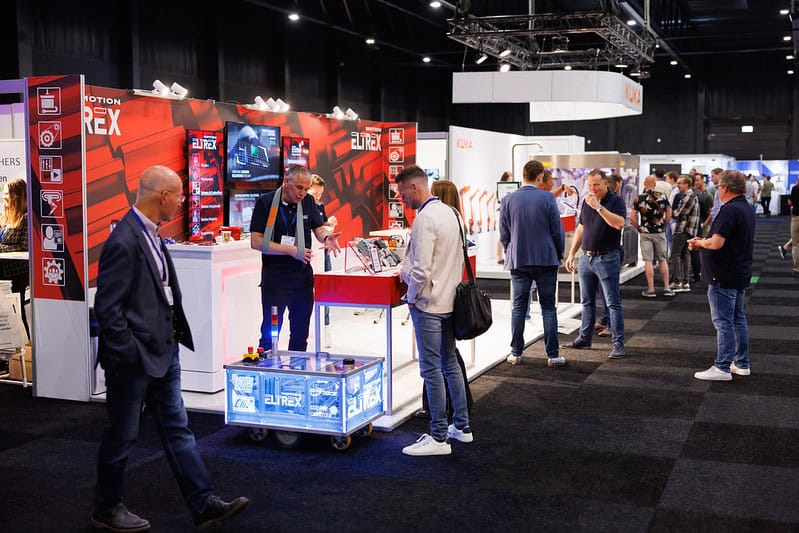
How will robots change the world? A frequently asked and as yet unanswered question. After all, we do not have a crystal ball. What we do know is that digitalization and automation have changed the world enormously in recent decades. At Eindhoven University of Technology (TU/e) in the Netherlands, the potential of smart machines in industry and daily life is being researched each and every day. Scientists immerse themselves in technology and student teams get to work on concrete solutions to social problems. This series will tell you about the latest robots, their background, and their future. Today, the first episode is all about light-guided robots.
Researchers at the Technical University of Eindhoven (TU/e) are working on a robot that moves when light is shone on it. This enables the robot to pick up a small package and deliver it somewhere else. The light-driven robot is made of special plastic, liquid crystalline polymer, which responds to light. Cables, computers, or batteries are no longer needed as a result.
“We arrange the molecules in the plastic in a certain way and add light-sensitive molecules to it,” Marina Pilz da Cunha explains. She is a Ph.D. candidate within the “Stimuli-responsive functional materials and devices” research group at the TU/e Faculty of Chemistry under the leadership of Albert Schenning. “The light-sensitive molecules absorb specific light, e.g. UV or blue light. They convert that into heat. Because the molecules heat up, they create movements that repel and attract. This allows the plastic to move.” By using different kinds of light-sensitive molecules and different types of light, the robot is capable of making a variety of movements. “As a human being, you also use several muscles to move your arm. This applies to a robot as well.”
Package deliverer
Instead of electricity, the robot uses light as a source of energy. It is a relatively new field of research. “We are exploring the material and making prototypes to figure out what is possible,” says Pilz da Cunha. At the beginning of this year, the researchers succeeded in making a small ‘package deliverer ‘ using this technology. “That was the first light-duty robot with multi-directional motor skills and the ability to perform a variety of tasks. For example, the robot can walk and pick up and deliver packages,” she states. After some further development, this robot could be used in industry, for example. “In the future, the robot could replace parts in machines that human hands are unable to reach.”

In the meantime, there is also a prototype of the robot that works underwater. “That was quite a challenge. The molecules didn’t heat up enough underwater, so the robot was unable to move around enough. That’s why we’ve now designed a robot that only moves using light and no longer needs heat,” the Ph.D. student explains. In the future, this robot will, for example, be able to swim through bloodstreams to administer medicines. “That is just one of the many potential applications,” she adds.
Cleaning water
In addition, the researchers have also developed a prototype of a light-guided robot that can attract and capture oil droplets in water. “A large chain of these robots can help to purify water, for one thing. But much more research is needed in order to achieve this.”
Pilz da Cunha tries to draw inspiration from nature when designing robots. As an example, this oil-capturing robot is based on a coral polyp, a small animal with tentacles that make up coral. The creatures can create water currents with their tentacles. The robot rotates, thereby creating a current and attracting oil droplets to it. Then it grabs a drop of oil with its tiny ‘arms’.
Collaboration is a powerful medium
Research is being carried out around the world into these small, plastic robots. “This is also necessary in order to ultimately really be able to harness the technology for social applications,” Pilz da Cunha explains. She is proud to be contributing to this. “What makes our university and our research group special is our collaboration and approach,” she says. “The group’s motto is: from molecule to machine. We, therefore, look at different aspects and any eventual applications. Several faculties have a part to play in this. That is what makes our research so powerful. Good collaboration between the separate disciplines is very important when it comes to making a robot.”
Creativity
According to Ph.D. student Marina Pilz da Cunha, the so-called soft robots are the future. “Light is all that is needed to control these robots. This offers scope for applications where robots equipped with cables and computers are less suitable.” What can all these robots be used for? That’s hard to say. “We are now in the early stages of development. But when you realize that a robot can walk or swim without cables or computers, you can let your creativity run wild,” she points out.
If Pilz da Cunha is allowed to dream, then in future she will devise many more materials that are based on nature. ” At present, polymeric materials are static, they just do what we had developed them for. But what if a sweater could automatically adapt to the weather conditions? Then you will never have to put on or take off a jacket whenever the weather changes. I think it’s cool to develop materials that have an impact on our future lives.”








